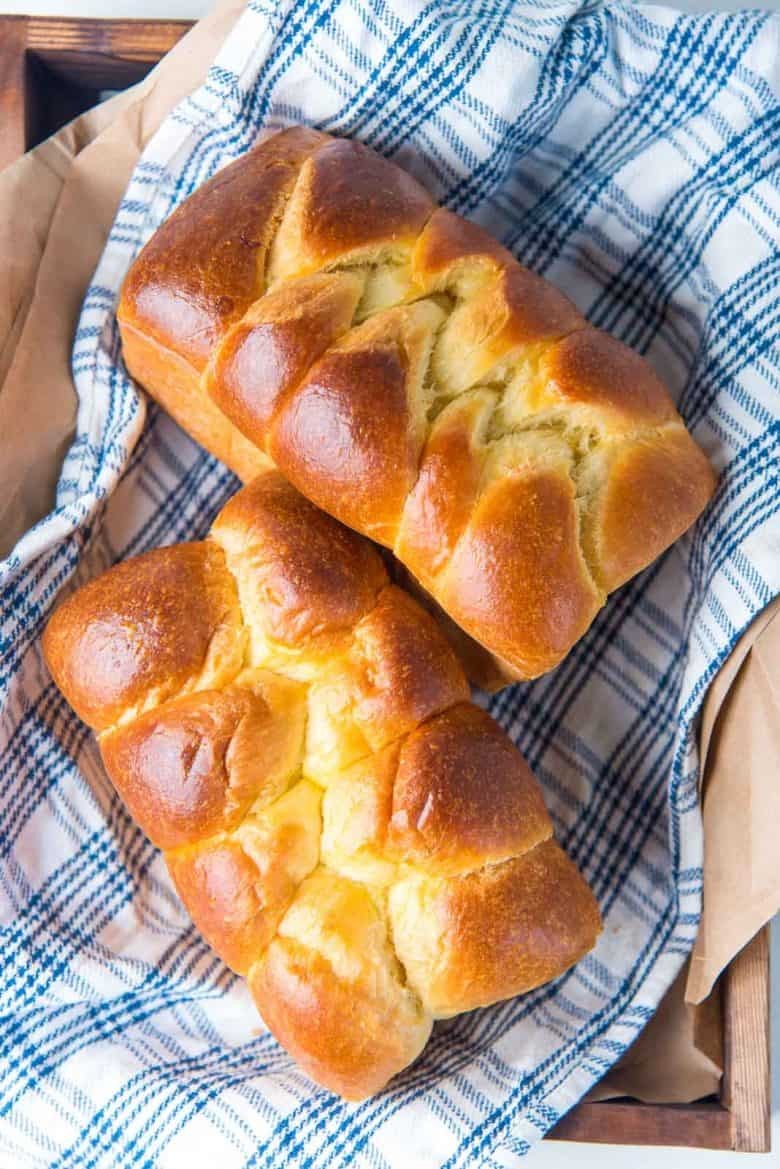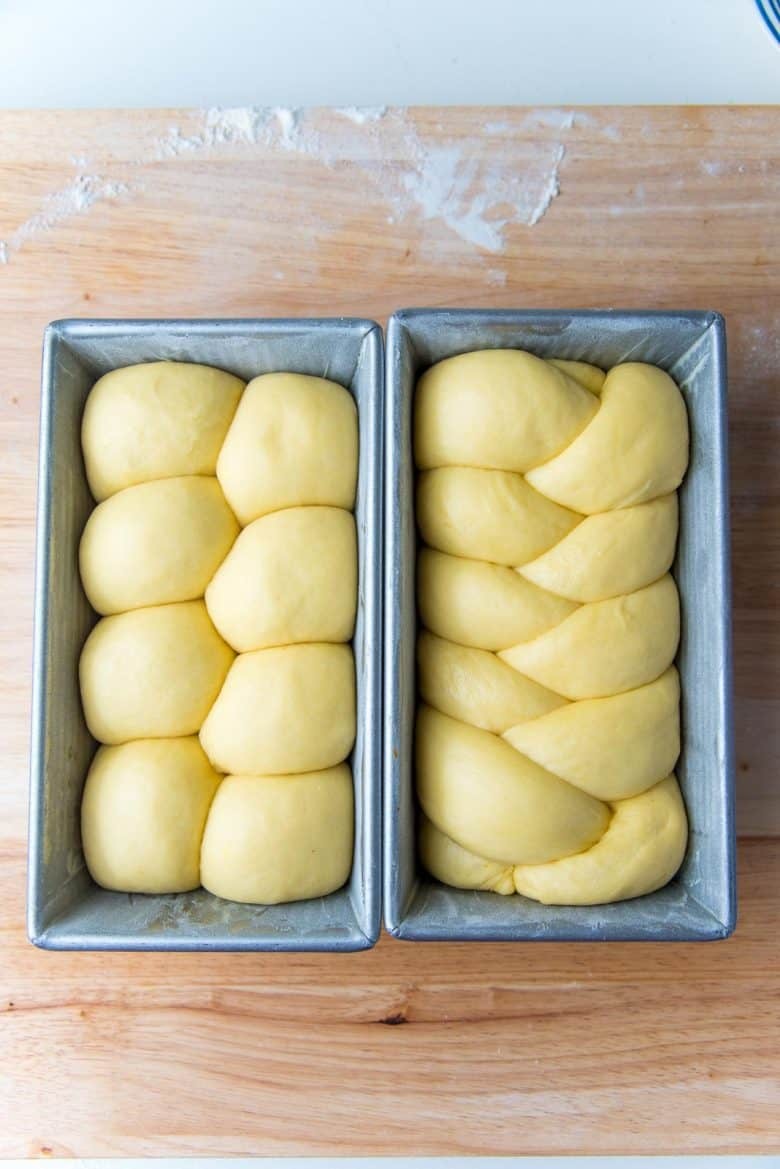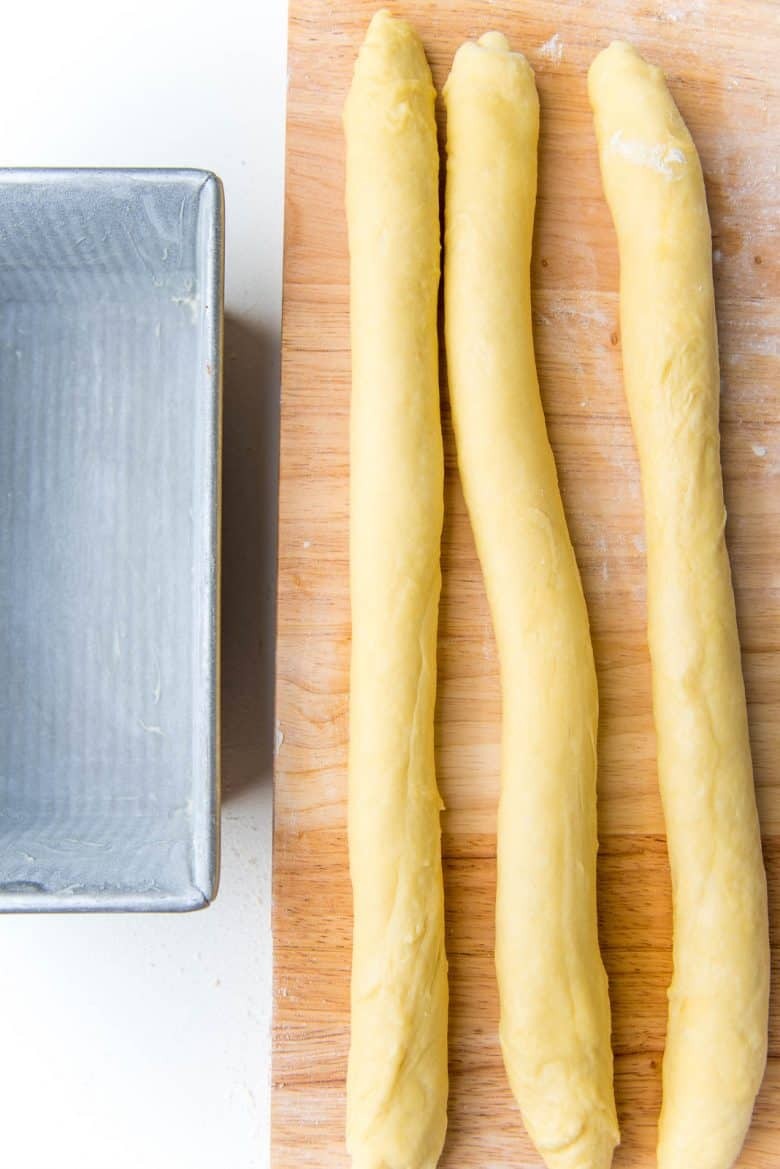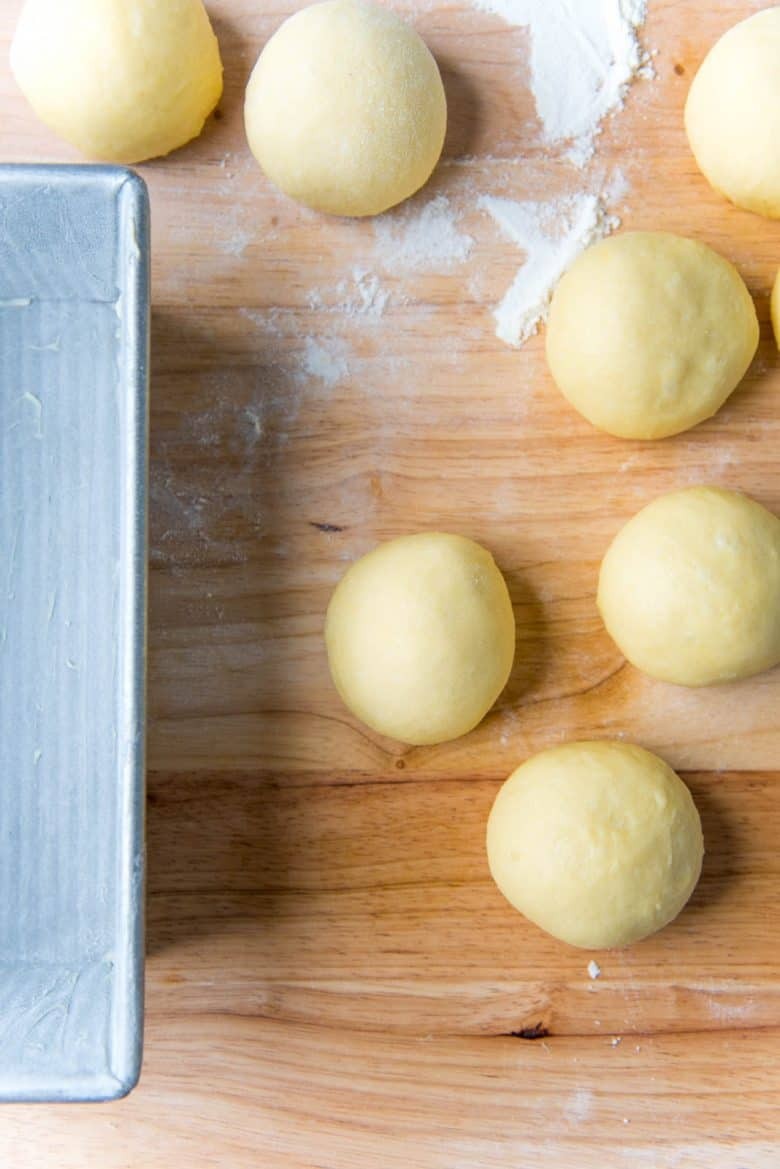Brioche bread is a rich, buttery, and flavorful bread that elevates any meal or snack. Are you curious about what makes brioche special? Look no further than WHAT.EDU.VN We’ll explore everything from its definition and unique characteristics to its versatile uses and a simple way to get answers for free, all while highlighting key baking considerations. Explore related bread and baking terminologies with us.
1. Defining Brioche Bread: A Culinary Exploration
Brioche bread is a type of French bread distinguished by its high egg and butter content. This gives it a rich, tender crumb and a golden-brown crust. It’s often described as a cross between bread and pastry due to its decadent flavor and texture.
1.1. The Hallmarks of Authentic Brioche
- Richness: The generous amounts of butter and eggs create a luxurious mouthfeel.
- Tenderness: The high fat content inhibits gluten development, resulting in a soft, delicate crumb.
- Flavor: Brioche boasts a subtly sweet and buttery taste that is satisfying on its own or complements a variety of pairings.
- Texture: It should have a light and airy texture with a slightly moist and delicate crumb.
- Crust: A shiny, golden-brown crust is a result of the egg wash applied before baking.
1.2. Brioche in the World of Viennoiseries
Brioche belongs to the viennoiserie family, a category of French baked goods made from yeast-leavened dough. Other members of this family include croissants, pain au chocolat, and Danish pastries. What sets viennoiseries apart is their enriched dough, often containing butter, eggs, milk, and sugar, which contribute to their characteristic richness and flavor.
2. Decoding the Brioche Recipe: Ingredients & Techniques
Understanding the ingredients and techniques is crucial for successfully baking brioche. Let’s delve into the key components of a brioche recipe and explore the methods involved.
2.1. Essential Ingredients: Building Blocks of Brioche
- Flour: All-purpose flour is commonly used, providing the structure for the bread. Bread flour can also be used, resulting in a slightly chewier texture.
- Yeast: This is the leavening agent that allows the dough to rise. Active dry yeast is a popular choice, but fresh yeast can also be used.
- Milk/Water: Provides moisture for the dough and activates the yeast.
- Eggs: They add richness, flavor, and structure to the dough. Egg yolks contribute to the bread’s signature yellow color.
- Butter: The key ingredient that provides richness, tenderness, and flavor. Unsalted butter is preferred to control the salt content.
- Sugar: Adds sweetness and helps to tenderize the dough.
- Salt: Balances the sweetness and enhances the overall flavor.
2.2. Mastering the Brioche Technique: A Step-by-Step Guide
- Activating the Yeast: Dissolve the yeast in warm milk or water with a touch of sugar or honey. Allow it to sit for a few minutes until it becomes frothy, indicating that the yeast is active.
- Combining Ingredients: In a mixing bowl, combine the flour, sugar, and salt. Add the activated yeast mixture, eggs, and any other flavorings.
- Kneading: Knead the dough until it becomes smooth and elastic. This can be done by hand or with a stand mixer.
- Adding Butter: Gradually incorporate the softened butter into the dough, a little at a time, until it is fully combined. This step requires patience as the dough will become quite sticky.
- First Proofing: Place the dough in a greased bowl, cover, and let it rise in a warm place until doubled in size. This process can take 1-2 hours.
- Retarding (Optional): For enhanced flavor and easier handling, refrigerate the dough for several hours or overnight after the first proofing.
- Shaping: Divide the dough and shape it into your desired form, such as a loaf, rolls, or a braided loaf.
- Second Proofing: Place the shaped dough on a baking sheet, cover, and let it rise again until nearly doubled in size.
- Baking: Brush the dough with an egg wash for a shiny crust and bake in a preheated oven until golden brown and cooked through.
- Cooling: Let the baked brioche cool on a wire rack before slicing and serving.
3. Unleashing the Versatility of Brioche: Culinary Applications
Brioche’s unique flavor and texture make it incredibly versatile in the kitchen. Here are some popular ways to enjoy it:
3.1. Sweet Indulgences
- French Toast: Brioche elevates classic French toast with its rich and tender crumb.
- Bread Pudding: Its ability to soak up flavors makes it an ideal choice for bread pudding.
- Cinnamon Rolls: The buttery dough creates incredibly decadent cinnamon rolls.
- Bostock: This French pastry features brioche topped with almond cream and syrup.
3.2. Savory Delights
- Sandwiches: Brioche buns add a touch of luxury to burgers, sandwiches, and sliders.
- Savory Bread Pudding: Experiment with savory ingredients like cheese, vegetables, and herbs in a brioche bread pudding.
- Croutons: Brioche croutons add a rich and buttery flavor to salads and soups.
3.3. Simple Pleasures
- Toast: Enjoy it simply toasted with butter and jam.
- Accompaniment: Serve it alongside soups, stews, or charcuterie boards.
4. Brioche Bread: Frequently Asked Questions
| Question | Answer |
|---|---|
| Can I use bread flour instead of all-purpose flour? | Yes, but the texture might be slightly different. Bread flour has a higher protein content, leading to a chewier texture. |
| Can I use salted butter? | It’s not recommended. Salted butter has more water and can make the bread too salty. |
| Can I make brioche bread sweeter? | Yes, but adding too much sugar can make the dough slack. Adjust the amount of egg whites accordingly. |
| Can I make it by hand if I don’t have a mixer? | It’s possible, but requires a lot of patience and arm strength due to the dough’s soft consistency. |
| Can I make this dough in a bread machine? | It’s not recommended. Brioche dough is very soft, and bread machines may not be able to handle it well. Some users have had issues with the dough being too soft to knead properly. |
| Can I make one loaf? | Making just one loaf in a stand mixer might be difficult as the kneading hook might not grab the dough properly. Hand kneading is a better option for a single loaf. |
| Can I freeze brioche? | Yes, you can freeze whole or sliced loaves. Store in an airtight container or wrap tightly in plastic wrap and foil to prevent freezer burn. |
| Why is my dough so sticky and wet? | Brioche dough is meant to be sticky due to the high butter and egg content. Proper kneading is key to developing the gluten. |
| How can I tell that the dough is done kneading? | The dough should be shiny and smooth and should lift cleanly off the bottom of the bowl when picked up with the dough hook. |
| My dough is very soft; can I add more flour? | Adding more flour can make the dough less soft. Make sure you knead the dough until the gluten has developed. |
| What kind of mixer do you use? | A KitchenAid artisan mixer is recommended for making brioche dough. |
| Can I skip the overnight proof? | The overnight proof develops more flavor and chills the dough, making it easier to handle. You can chill the dough in the freezer for a few hours if you need to speed up the process. |
| Can I skip the first proof at room temperature? | The first proof at room temperature helps with gluten development and flavor. If you skip it, you may need to proof the dough longer in the fridge. |
| Why is my brioche dough so oily, even after kneading it for so long? | This can happen in high humidity or high-temperature environments. Chill the dough between kneading to ensure the butter stays cold and incorporates properly. |
| Why does my brioche taste so yeasty? | Over-proofing the dough can cause a yeasty taste. Make sure to proof the dough only until needed and not necessarily by time. |
| Can I make brioche buns instead of loaves? | Yes, the recipe is the same, but the shaping technique is different. There are recipes specifically for brioche buns with different weight variations for various sizes of burgers. |




5. Troubleshooting Your Brioche: Common Issues & Solutions
Even with the best recipe, baking can sometimes present challenges. Here are some common issues you might encounter when making brioche and how to address them:
5.1. Dough is Too Sticky
- Cause: High butter and egg content, warm kitchen temperature, or over-mixing.
- Solution: Ensure your butter is properly softened but not melted. Chill the dough for a short period to firm up the butter. Avoid over-mixing, which can develop the gluten too much.
5.2. Dough Doesn’t Rise
- Cause: Inactive yeast, cold environment, or too much salt.
- Solution: Check the expiration date of your yeast. Ensure the milk or water used to activate the yeast is not too hot, as this can kill the yeast. Provide a warm environment for proofing. Avoid adding salt directly to the yeast.
5.3. Bread is Dry
- Cause: Over-baking, not enough fat in the dough, or using too much flour.
- Solution: Monitor the baking time carefully and use an oven thermometer to ensure accurate temperature. Make sure you use the correct amount of butter and eggs as specified in the recipe. Avoid adding extra flour to the dough.
5.4. Bread is Too Dense
- Cause: Under-proofing, not enough kneading, or using old yeast.
- Solution: Allow the dough to fully proof before baking. Knead the dough until it is smooth and elastic. Use fresh, active yeast.
5.5. Crust is Too Dark
- Cause: Oven temperature too high or too much sugar in the dough.
- Solution: Reduce the oven temperature slightly and monitor the baking process closely. Adjust the sugar content in the recipe if necessary.
6. Brioche Around the World: Regional Variations
Brioche, while distinctly French, has evolved into various regional adaptations around the world. Here are a few notable examples:
- Brioche Nanterre: This classic French brioche is baked in a loaf pan and features a distinctive row of dough balls.
- Brioche à Tête: This iconic brioche is characterized by its “head,” a small ball of dough placed on top of a larger base.
- Kugelhopf: Popular in Central Europe, this brioche-like cake is baked in a distinctive fluted pan and often contains raisins and almonds.
- Panettone: This Italian sweet bread is traditionally enjoyed during Christmas and New Year. It is similar to brioche in its richness and egg content and often contains candied fruits and raisins.
7. Health Considerations: Brioche in Moderation
Due to its high butter and egg content, brioche is a relatively high-calorie and high-fat food. It’s best enjoyed in moderation as part of a balanced diet.
7.1. Nutritional Profile (per slice, approximate):
- Calories: 150-200
- Fat: 8-12 grams
- Saturated Fat: 5-7 grams
- Carbohydrates: 15-25 grams
- Protein: 3-5 grams
7.2. Tips for Healthier Enjoyment:
- Portion Control: Be mindful of serving sizes.
- Pair with Healthy Options: Enjoy brioche with fruit, vegetables, or lean protein.
- Homemade Versions: Control the ingredients by making your own brioche and reducing the amount of butter and sugar.
8. Ask Your Baking Questions at WHAT.EDU.VN
Do you have any burning questions about brioche, bread baking, or any other culinary topic? Don’t hesitate to ask the experts and community at WHAT.EDU.VN! We offer a free platform where you can get answers to all your questions.
8.1. How WHAT.EDU.VN Works:
- Submit Your Question: Simply type your question into the search bar or question form.
- Get Expert Answers: Our community of knowledgeable users and experts will provide you with accurate and helpful answers.
- Explore a Variety of Topics: Ask questions about anything from baking and cooking to science, history, and more.
9. Why Choose WHAT.EDU.VN for Your Questions?
- It’s Free: Get your questions answered without any cost or subscription fees.
- It’s Fast: Receive answers quickly from our responsive community.
- It’s Reliable: Benefit from the knowledge and expertise of experienced users.
- It’s Comprehensive: Explore a wide range of topics and get answers to all your questions.
10. Ready to Ask Your Question?
Don’t let your curiosity linger! Head over to WHAT.EDU.VN now and ask your question. Our community is ready to help you learn and grow.
Address: 888 Question City Plaza, Seattle, WA 98101, United States
Whatsapp: +1 (206) 555-7890
Website: WHAT.EDU.VN
11. The Allure of Brioche: A Conclusion
Brioche bread, with its rich flavor, tender texture, and versatility, holds a special place in the world of baking. Whether you’re a seasoned baker or a curious beginner, understanding the fundamentals of brioche can unlock a world of culinary possibilities. And remember, if you ever encounter a question along the way, WHAT.EDU.VN is here to provide you with the answers you need.
11.1. Key Takeaways:
- Brioche is a French bread enriched with butter and eggs.
- Its unique flavor and texture make it ideal for both sweet and savory applications.
- Understanding the ingredients and techniques is essential for successful brioche baking.
- Experiment with different shaping techniques and regional variations.
- Enjoy brioche in moderation as part of a balanced diet.
- WHAT.EDU.VN is your go-to resource for all your questions.
12. Getting the Perfect Brioche: Essential Tips and Tricks
Achieving brioche perfection requires attention to detail and a few key techniques. These tips will guide you to baking success.
12.1. The Butter Matters
- Softened but Not Melted: Ensure your butter is at room temperature but still holds its shape. Melting the butter will result in a greasy dough.
- Incorporate Gradually: Add the butter to the dough in small increments, allowing each addition to fully incorporate before adding more.
12.2. Kneading Is Key
- Patience is a Virtue: Kneading brioche dough takes time. Be patient and continue kneading until the dough is smooth, elastic, and pulls away from the sides of the bowl.
- Stand Mixer Recommended: A stand mixer makes the kneading process much easier, but hand kneading is possible with extra effort.
12.3. Proofing for Perfection
- Warm and Cozy: Provide a warm, draft-free environment for the dough to rise. A slightly warmed oven (turned off) or a warm spot in your kitchen works well.
- Double in Size: Allow the dough to fully double in size during both the first and second proofing. This ensures a light and airy texture.
12.4. The Egg Wash Secret
- Shiny Crust: An egg wash (a mixture of egg and water or milk) brushed over the dough before baking creates a beautiful, shiny, golden-brown crust.
- Even Coverage: Ensure even coverage with the egg wash for a uniform crust color.
12.5. Baking with Care
- Accurate Temperature: Use an oven thermometer to ensure your oven is at the correct temperature.
- Internal Temperature: Bake until the internal temperature reaches 190°F (88°C). This ensures the bread is fully cooked through.
- Cooling Time: Allow the brioche to cool on a wire rack before slicing. This prevents the bread from becoming soggy.
13. Beyond the Basics: Exploring Advanced Brioche Techniques
For those seeking to elevate their brioche baking skills, these advanced techniques will help you achieve even better results.
13.1. Tangzhong Method
- What it is: The tangzhong method involves cooking a small portion of the flour and liquid (milk or water) into a thick paste before adding it to the rest of the ingredients.
- Benefits: This technique creates a more hydrated dough, resulting in a softer, more tender crumb that stays fresh longer.
13.2. Poolish or Biga
- What it is: A poolish or biga is a pre-ferment made with flour, water, and a small amount of yeast.
- Benefits: Using a pre-ferment enhances the flavor of the brioche and improves its texture.
13.3. Lamination
- What it is: Lamination involves folding layers of butter into the dough, similar to making croissants.
- Benefits: This technique creates a flaky, layered texture in the brioche.
13.4. Shaping Mastery
- Experiment: Try different shaping techniques, such as braiding, creating a couronne (ring), or forming individual rolls.
- Consistency: Ensure consistent shaping for even baking.
13.5. Flavor Infusions
- Citrus Zest: Add citrus zest (lemon, orange, or grapefruit) to the dough for a bright, aromatic flavor.
- Spices: Incorporate spices like cinnamon, cardamom, or nutmeg for a warm, comforting flavor.
- Extracts: Use extracts like vanilla, almond, or rum to enhance the overall flavor.
14. Storage Solutions: Keeping Your Brioche Fresh
Proper storage is essential to maintain the freshness and quality of your brioche.
14.1. Room Temperature
- Airtight Container: Store the brioche in an airtight container at room temperature for up to 2-3 days.
- Plastic Wrap: Wrap the brioche tightly in plastic wrap to prevent it from drying out.
14.2. Freezing
- Wrap Tightly: Wrap the brioche tightly in plastic wrap and then in foil to prevent freezer burn.
- Slices or Loaves: Freeze whole loaves or individual slices for easy thawing.
- Thawing: Thaw frozen brioche at room temperature or in the refrigerator.
14.3. Reheating
- Oven: Reheat brioche in a preheated oven at 300°F (150°C) for 5-10 minutes.
- Toaster: Toast slices of brioche in a toaster for a quick and easy treat.
15. Unique Brioche Creations: Recipes to Inspire
Ready to take your brioche baking to the next level? These unique recipes will inspire you to create memorable dishes.
15.1. Brioche Breakfast Casserole
- Ingredients: Brioche, eggs, milk, cheese, ham or bacon, vegetables.
- Description: A savory breakfast casserole featuring layers of brioche, cheese, and your favorite breakfast ingredients.
15.2. Brioche Ice Cream Sandwiches
- Ingredients: Brioche, ice cream, toppings.
- Description: Use slices of brioche as the “bread” for decadent ice cream sandwiches.
15.3. Brioche Monkey Bread
- Ingredients: Brioche dough, butter, cinnamon, sugar.
- Description: A pull-apart bread made with small balls of brioche dough coated in cinnamon and sugar.
15.4. Brioche French Toast Sticks
- Ingredients: Brioche, eggs, milk, cinnamon, sugar.
- Description: Cut brioche into sticks, dip in French toast batter, and bake or fry for a fun and delicious breakfast treat.
16. Understanding the Science of Brioche
The magic of brioche lies not just in its ingredients and techniques, but also in the science behind the bread.
16.1. Gluten Development
- What it is: Gluten is a protein formed when flour is mixed with water. It provides the structure and elasticity to the dough.
- In Brioche: The high fat content in brioche inhibits gluten development, resulting in a tender crumb.
16.2. Yeast Fermentation
- What it is: Yeast consumes sugars in the dough and produces carbon dioxide gas, which causes the dough to rise.
- In Brioche: The yeast fermentation process is crucial for creating the light and airy texture of brioche.
16.3. Butter’s Role
- Tenderizer: Butter coats the flour particles, preventing them from forming strong gluten bonds.
- Flavor: Butter adds richness and flavor to the brioche.
- Moisture: Butter helps to keep the bread moist.
16.4. Egg’s Contribution
- Richness: Eggs add richness and flavor to the brioche.
- Structure: Eggs contribute to the structure of the bread.
- Color: Egg yolks give the brioche its characteristic yellow color.
17. Brioche Baking Checklist: Ensuring Success
Before you embark on your brioche baking adventure, use this checklist to ensure you have everything you need for success.
- [ ] Gather all ingredients: Flour, yeast, milk, eggs, butter, sugar, salt.
- [ ] Ensure butter is softened but not melted.
- [ ] Check the expiration date of your yeast.
- [ ] Have a stand mixer or be prepared to knead by hand.
- [ ] Provide a warm environment for proofing.
- [ ] Prepare an egg wash.
- [ ] Preheat oven to the correct temperature.
- [ ] Use an oven thermometer.
- [ ] Cool the baked brioche on a wire rack.
18. Advanced Troubleshooting: Complex Issues Solved
Even experienced bakers can encounter complex issues. Here are some solutions for those tricky problems.
18.1. Brioche is Too Greasy
- Cause: Too much butter, butter not properly incorporated, or dough too warm.
- Solution: Reduce the amount of butter slightly, ensure the butter is softened but not melted, and chill the dough during kneading if necessary.
18.2. Brioche is Too Chewy
- Cause: Too much kneading, using bread flour instead of all-purpose flour.
- Solution: Reduce the kneading time, use all-purpose flour, and avoid over-mixing.
18.3. Brioche Has a Sour Taste
- Cause: Over-fermentation, using too much yeast, or improper storage.
- Solution: Reduce the fermentation time, use the correct amount of yeast, and store the brioche properly.
18.4. Brioche Crust is Too Thick
- Cause: Baking at too high a temperature, over-baking, or using too much sugar.
- Solution: Reduce the baking temperature, monitor the baking time closely, and adjust the sugar content if necessary.
19. Brioche Glossary: Essential Terms Defined
Familiarize yourself with these essential terms to enhance your understanding of brioche baking.
- Brioche: A rich French bread made with butter and eggs.
- Viennoiserie: A category of French baked goods made from yeast-leavened dough.
- Proofing: The process of allowing dough to rise.
- Kneading: The process of developing gluten in the dough.
- Egg Wash: A mixture of egg and water or milk used to create a shiny crust.
- Gluten: A protein formed when flour is mixed with water.
- Fermentation: The process of yeast consuming sugars in the dough.
- Retarding: Slowing down the fermentation process by refrigerating the dough.
- Tangzhong: A technique involving cooking a portion of the flour and liquid into a paste.
- Poolish/Biga: A pre-ferment made with flour, water, and a small amount of yeast.
- Lamination: Folding layers of butter into the dough.
20. Continued Learning: Expand Your Brioche Knowledge
The world of brioche baking is vast and ever-evolving. Continue your learning journey with these resources.
- Online Courses: Explore online baking courses that focus on brioche and other viennoiseries.
- Baking Books: Consult baking books dedicated to bread making and French pastries.
- Baking Blogs: Follow baking blogs and websites for new recipes, techniques, and tips.
- Baking Communities: Join online baking communities to connect with other bakers, share your experiences, and ask questions.
And remember, WHAT.EDU.VN is always here to answer your questions and provide you with the information you need to succeed in your baking endeavors.
Why struggle with baking questions when WHAT.EDU.VN offers a simple solution? Get the answers you need quickly and easily, without spending a dime. Our community of experts is eager to help you overcome your baking challenges and create delicious brioche. Visit what.edu.vn today and experience the convenience of free, reliable answers!